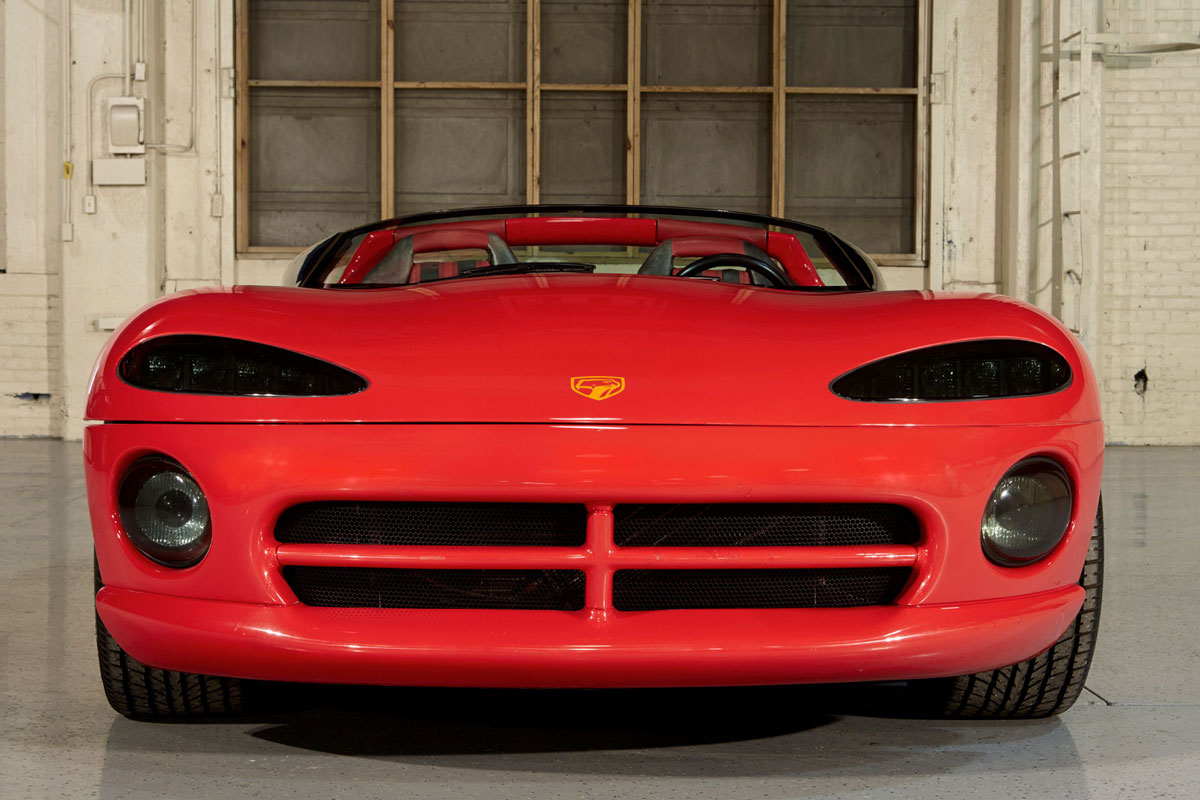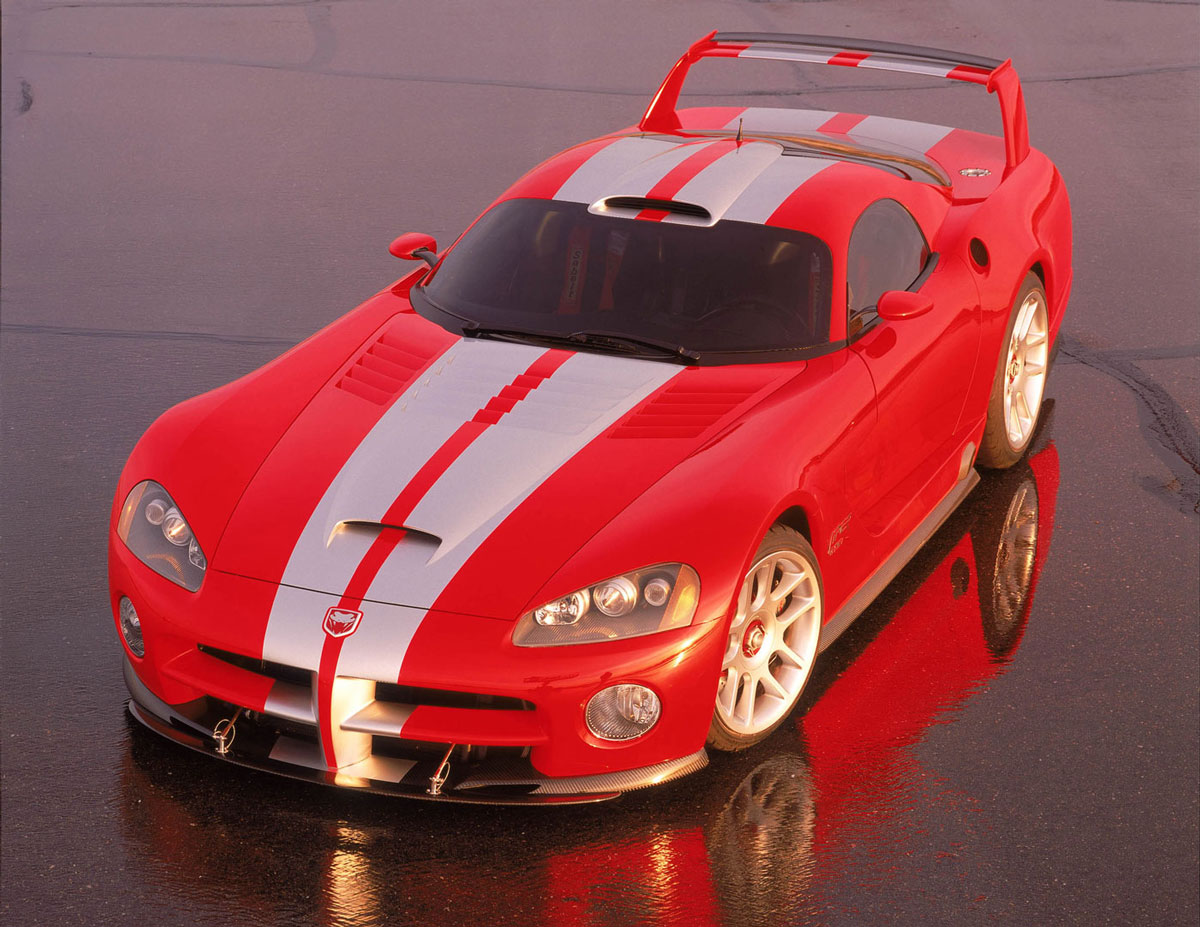Media | Articles
How Chrysler’s mid-engine Viper idea became the Ford GT
The stillborn, mid-engine Viper was supposed to remain a secret. This Viper that wasn’t could have become the first mid-engine American sports car. Still, nobody is saying much—at least not on the record—about the car that became the stimulus for what would be the Ford GT in the mid-2000s. That’s right; Chrysler’s mid-engine Viper program was the basis for Ford’s 2006 GT. Confused? Read on.
Car companies throw a lot of things at walls to see what sticks. Car development requires a proven need, feasibility studies, marketing and building plans, tons of cash, and a series of directives and approvals going all of the way to the mahogany-lined walls of a company’s executive row before anything gets built.
It all started in the mid-1990s, and what remains of Chrysler from those days has since seen three different ownerships and two decades of change. Dodge’s “halo car” was the Viper—a wicked monster meant to cast a glow over its lesser-endowed siblings within the marque. Chrysler built the Viper knowing it wouldn’t make money, but its mere existence was worth millions of dollars in marketing and free advertising. And in that regard it was a smash success.
“But some Chrysler executives had Corvette envy,” says Chris Theodore, then Chrysler’s general manager of the small car platform in Chrysler engineering. (The Viper team reported to him.) Theodore and executive VP for engineering Francois Castaing were the driving forces behind the idea of a mid-engine Viper. We know the principals involved, we just can’t get them to tell us much, except for Theodore. He’s quick to give credit where it’s due, but someone in his position still treads carefully, even after 20 years.
Starting a mid-engine Viper from scratch
Marketplace
Buy and sell classics with confidence

To get things started, Chrysler kicked off a packaging study for a mid-engine design in May 1996. Roy Sjoberg was the chief engineer. Feasibility studies in CAD commenced, and then two wooden bucks were built—one to explore a “reverse engine” layout where the engine was rear-facing with a forward-facing transmission and a gearset to take the power back to the differential. The other buck was a more conventional forward-facing engine and transaxle behind it
The reverse engine layout required a slightly wider chassis and it compromised the passenger seat. “They were just wood bucks to see how much of the existing Viper components we might be able to use,” Theodore says.
Studies got more serious once the team analyzed the pros and cons for each layout. “We knew we had to start planning for the Gen 3 Viper, so you need a business case to figure out how much the investment and variable cost is going to be,” Theodore says. “The assumption from the study was we had to use as much of the existing Viper as we could to minimize the incremental investment. It would have to be less than the original Viper investment.” Around this time a crude business plan and sourcing strategy came together to move the process forward.
The transaxle was one of the big potential costs, Theodore says. “The numbers weren’t terrible. It was several million [dollars] more than the [forward-facing transmission] approach but nothing catastrophic.” Chrysler’s in-house parts supplier was Acustar, who manufactured many components including transmissions, so there was confidence transaxle development costs could be held down utilizing them.

Eight engineers comprised the small mid-engine Viper team, housed in one of Chrysler’s side shops in Madison Heights, Michigan. They cobbled together the two chassis with many existing Viper components, including body panels, to determine the packaging, proportions, and physical volume. The bucks utilized the existing Viper front suspension and steering. The version with the transaxle also used the entire instrument panel structure, and of course the V-10 engine. “Basically between the two versions there wasn’t $10 million between them,” Theodore says.
In both versions the H-point (the “hip-point”—where a driver’s hip is located relative to the chassis) was moved down, the seats were moved forward, the hood was lowered, and the wheelbase was increased. Led by Jim Sayen, one of the packaging team members, the Viper team compiled a 50-page report. (Sayen declined to be interviewed for this article.)
In October of 1996, President Bob Lutz, Castaing, and head of Chrysler design Tom Gale put together a presentation on the status of the project. “The display included the bucks, some competitive Ferraris, and a dressed-up Viper where the body panels were reconfigured with the lower hood, wheelbase stretched, painted in gray primer,” Theodore says.
The mid-engine Viper fizzles, but the will remains

“Lutz was not as interested as the team had hoped, and Gale was lukewarm to the car as well,” Theodore says. Perhaps a bit of NIH (Not Invented Here) syndrome crept in.
Things cooled off after that. Bob Eaton moved Lutz aside, while Castaing and former chief engineer Sjoberg retired. The last advocates standing were Theodore and new Viper chief engineer John Fernandez. Together they let the dust settle before taking one last stab at the mid-engine Viper concept they labeled “GTM” (for mid-engine GT).
“There were at least three more clay models made in 3/8th-scale with a slightly different package similar to the Ferrari 355,” Theodore says. When Daimler-Benz purchased Chrysler in 1998, disguised as a “merger of equals,” it spelled the end of the project.
Theodore recalls the main goals for a more refined third-gen Viper, including increased performance, power windows, and a proper convertible top were welcome improvements. But Theodore was still obsessed with doing a mid-engine sports car.


“One of the great frustrations for me is that I could see the [mid-engine] car in my head, and all of the structure underneath it,” he says. “You have to find a way to communicate it. The Viper team got enthused—they were all car guys. They’d cut one piece and put another together and then spray some primer over it, and soon it began to look like a car to show others why they were so excited.”
Theodore is proud of the Viper team and of his time at Chrysler. “Look, Chrysler did things differently than GM and Ford. We had a broad team of talented guys that could do a lot with very little, so this wasn’t even on the same level as effort on other platforms. It was a small skunkworks study and it looked to be a good idea—I mean look how many times GM tried to do a mid-engine Corvette over the years.”
A second chance, and the Ford GT

That might have been the end of the mid-engine dream, were it not for Theodore leaving Chrysler for a new gig at Ford. “When I went to Ford I was still frustrated that we didn’t do the mid-engine Viper,” he says. “The logical and best place to do a new GT40 was at Ford.” Ford tried many times before to build an homage to one of the greatest race cars ever, so it was not a novel idea. Theodore says that the project would always get canceled before they got too far afield.
“My whole thing was, look, the Viper is a rip-off of the Cobra,” he says. “Chrysler ripped off Ford’s heritage. The GTS (Viper coupe) was a rip-off of the Daytona Cobra, so why don’t we rip off Ford’s best heritage, which was the GT40? That was our thinking when we started talking about the mid-engine Viper.”
By March 1999 Theodore was on other side of that equation, tasked with closing the deal for Ford to acquire Volvo. “I was with Jac Nasser (former Ford CEO and president), Richard Parry Jones (former Group VP-Global Product Development, Chief Technical Officer, and Head of Global R&D Operations), and the entire executive management team. I pitched the GT40 idea on the plane. They got all excited and said, ‘Yeah, we need to do this,’ which was cool.”
Just like that, Ford started developing a modern-day GT40. To Theodore’s chagrin, the project slowed down for a while, in the end the 2005 Ford GT was born. As a side benefit, Theodore was happy to facilitate getting Carroll Shelby and Ford back together. This was a personal project for Theodore that was years in the making.
Remnants of a dream deferred
20180416200742)
For Chrysler, the idea of mid-engine sports car did eventually resurface in the form of the ME Four-Twelve concept. Built in 2003 by a small team of Chrysler engineers, it was unveiled at the 2004 Detroit show. Powered by a highly modified 6.0-liter Mercedes M120 V-12 engine, it featured special cylinder heads and four turbochargers, which combined produced 850 hp. A semi-automatic seven-speed transmission helped to cut 0–60 times to 2.9 seconds. The chassis was a monocoque tub with carbon-fiber body panels.
The ME Four-Twelve validated Chrysler’s earlier mid-engine Viper studies and showed that there were some within Chrysler aspiring to reach even loftier goals. Neither, however, amounted to anything in production form.
With the astounding 2017 Ford GT, and development ongoing for a production mid-engine Corvette set to debut at the 2019 Detroit show, we are in a golden age of highly technical, sophisticated mid-engine madness. Will Chrysler ever pick up the mantle and join the party?









